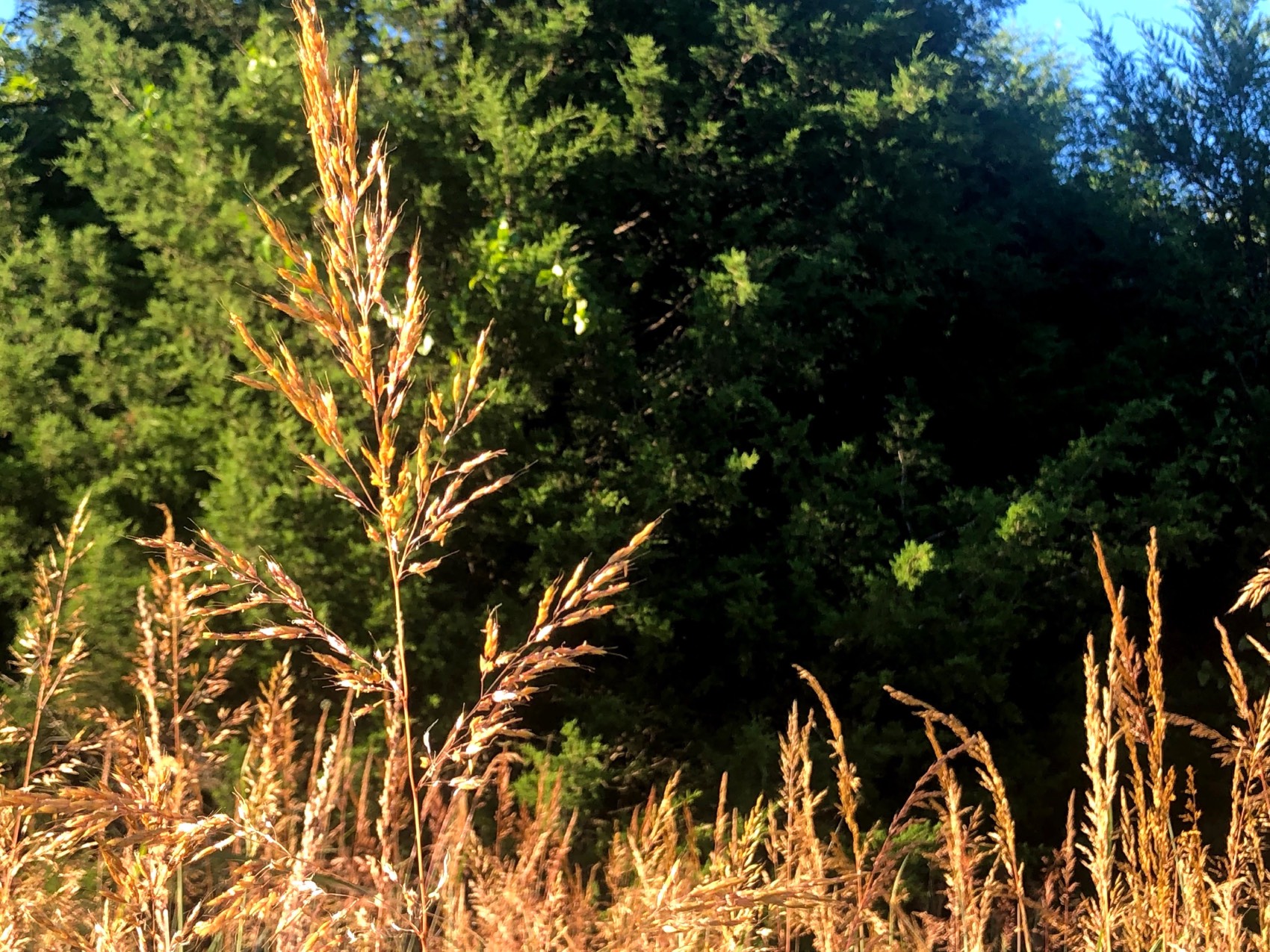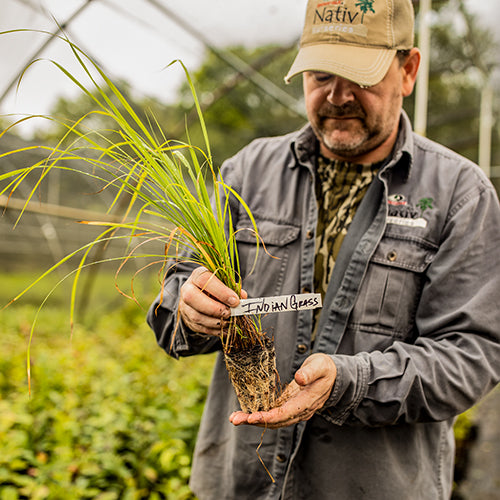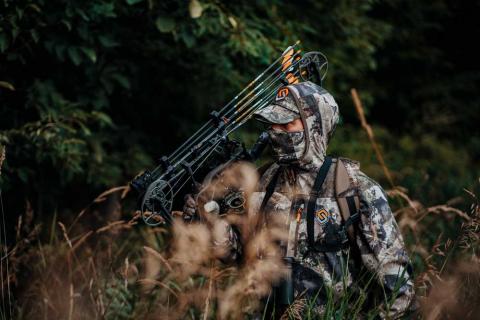Chris Bridges
Few plants are as characteristic of a certain type of wildlife habitat as the native warm season grasses are for prairies. While many of us in the Southeast only see small glimpses of scattered remnants of this important ecosystem, the sight of native grass seed heads in the late summer and fall remind us of the important features of these grasses and the types of sites upon which they can be found. Of our native grasses, indiangrass is an excellent plant to use in wildlife habitat improvement projects, field borders or other sites that require a drought-tolerant plant that provides a variety of benefits for wildlife species, including quail, turkey, rabbits and deer.
What Makes Indiangrass an Excellent Native Grass?

At first sight, several of the most important native warm season grasses resemble common introduced or invasive grasses. When I was learning to identify these grasses, I sometimes had a hard time distinguishing native switchgrass from the invasive weed johnsongrass, given the similarity in seed heads formed by these grasses and the height that they reach. However, indiangrass is most easily identified by the golden seed head formed in late summer and early fall, as well as the unique ligule pattern noted when examining the leaves. This plant reaches four to eight feet tall at maturity and the leaves often have a slightly blueish green color.
When I notice indiangrass growing in wild, I often try to take note of the soils and sites it is found on. Often I can find it growing on dry hillsides, poor roadside soils or other sites in which it is able to outcompete other vegetation. In years with below-average rainfall, indiangrass is especially noticeable. The deep root system of native prairie grasses likely help them to access scarce water better than other plant types.
However, the true value of indiangrass and other native warm season grasses lies in their ability to provide nesting cover for many different species of birds, including quail and other game birds. Many researchers point to the decline of native prairie grasses in pastures and hayfields over the past century as one of the contributing factors to the decline of quail. As fescue and improved cool season forages expanded, the amount of native grassland on many farms decreased along with nesting sites and escape cover for many bird species. However, many universities, state wildlife agencies and conservation organizations have collaborated in the past decade to improve native warm season grassland habitat on private lands.
Improving Habitat with Indiangrass

Mossy Oak's Nativ Nurseries sells Indiangrass plugs.
As wildlife biologists and grassland managers have recognized the role that native grasses play in providing nesting cover for upland game birds, opportunities for landowners to incorporate indiangrass into wildlife habitat management plans have increased. Most importantly, simply learning to recognize this species in remnant stands where it already exists can help to preserve the genetic diversity of prairie remnants. By identifying small existing stands and avoiding herbicide application and mowing, patches can be expanded, especially along roadways and field margins.
In addition to identifying and promoting existing stands, there are many opportunities to plant indiangrass or other native prairie species around the farm or hunting sites. Like many of our native warm season species, periodic prescribed burning or other means or competition control can help it to expand. Indiangrass can also be planted from seed. However, extensive preparation is necessary to be successful in stand establishment. Stands can be slow to start from seed, so competition control is vital for the first two years after planting.
As an alternative to planting from seed, many native plant nurseries have started offering indiangrass plugs that allow for more rapid stand establishment. Obviously setting out plants with more established root systems will help them to overcome competing vegetation more quickly. Though this might be difficult on large acreages, the establishment of indiangrass stands can contribute to any upland wildlife habitat improvement project. Additionally, many different varieties are currently available from nurseries. These range from varieties that have been selected for aesthetic qualities such as leaf color to ecotypes that are genetically well-adapted to certain regions of the country. Using genetic materials that matches local climate and site conditions can be a huge advantage for upland habitat improvement, especially considering the aggressive growth associated with many invasive species that must be addressed.
As you travel the highways and country roads this fall, take note of the amber seed heads of indiangrass that remain scattered across the landscape. These small patches are limited, but they represent a species that contributes a lot to soil erosion control and upland wildlife habitat. Indiangrass occupies soils that may be too droughty or poor for other grasses. This can be valuable information when developing a plan to improve upland habitat quality on your own property. When selecting a native grassland species for your projects, consider indiangrass due to its hardiness, drought-tolerance and for the benefits that it provides to many different species of wildlife.




























